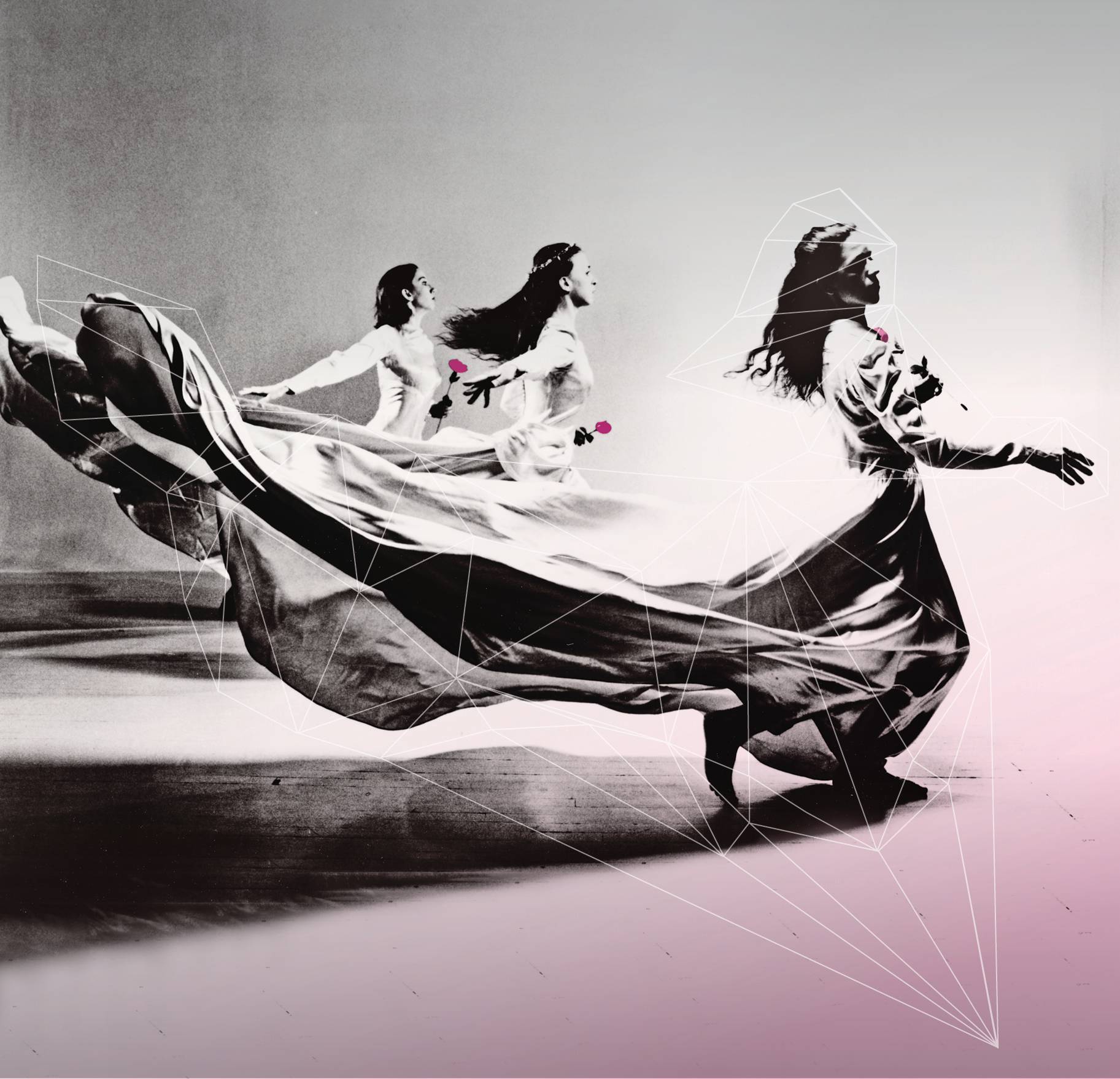The dance program at the University of Illinois is presenting their fall concert on the theme of Attachment, in conjunction with the Krannert Art Museum’s exhibition of the same name. Taken together, the performances present a delicate portrait of the connections and distances between us.
The concert program also focuses on the contributions of choreographers from Dance at Illinois’ past, present, and future. Particular homage is paid to the late professor emeritus Beverly Blossom, who passed away a year ago. Concert attendees should be sure to visit the memorial exhibit across from the Colwell Theater on Krannert’s promenade which features several wonderfully quirky costumes and a silent film of Dr. Blossom’s humorous solo, Besame Mucho.
The first performance of the concert, Club Goldie, is a good reason to arrive a few minutes early. The performers slowly enter the stage and vogue silently while the audience takes their seats, providing an eerily beautiful pre-show experience. Choreographed by undergrads Charles Gowin and Katherine Williams, the performance itself is intended to explore the parallels between a dance club and a boxing club. (Though to be honest, with all the sequined costumes, I found myself thinking of pro wrestling instead.) In a narrative sense, this parallel doesn’t always quite work; the transitions from dance to wrestling moves and back is never quite as obvious as it seems like it could be. But visually, it doesn’t matter. Whether dancing or fighting, the performers manage to maintain a consistent air of dreamy, edgy beauty, with a little humor thrown in for good measure. Though the piece felt a touch too long, the overall impression was of the trippiest girls’ night out ever, and I was glad to be a part of it.
Who What Where When Why How?, choreographed by faculty member Cynthia Oliver, was probably my least favorite of the evening’s performances. The program notes say that it was intended to explore specifically black American “gestural and culturally associated movements” and how the meanings of those movements change depending on the body demonstrating them. I was excited to see how this goal would play out, but turned out to be choreographed in a style I personally dislike. The piece seemed so full of recursive, internally significant symbolism that it would have needed a cypher for an average audience member to follow the arguments the choreography was struggling to make. The performance was kinetic and technically challenging, but also completely opaque (at least to me).
Given these complaints, it’s perhaps unfair that Kaivalya, by faculty member Linda Lehovec, followed immediately. In contrast to the previous performance, Kaivalya happened to combine two things I will always like: gracefully balletic dance, and contemplative music. Playing with the theme of attachment, the title is a reference to a Sanskrit word describing enlightened detachment. The simple costumes, peaceful music, and elegantly considered dancing did ultimately remind me a little of a yoga video, but in an awesome way. Sometimes you just have to embrace your inner love of tunics and cloud photography.
Speaking of clouds, Cloud Parade, by faculty member Tere O’Connor, may be my stealth favorite performance of the evening. The costumes are in childlike prints, and the dance itself reminded me strongly of children on a playground. Groups merge, dissolve, and re-form. Occasionally individuals do their own thing and sometimes that’s fine and sometimes it’s embarrassing. Smaller groups break off and scatter. Individuals are cast out and then immediately melt back into the group. It felt like people-watching that never got boring. I would happily watch it again, just to see what I missed the first time.
The final performance was the tribute performance of Brides, originally choreographed by Beverly Blossom. The piece itself was delightfully meaty, combining recognizable moments of a bride’s wedding day with doll-like stiffness and arch enthusiasm. I don’t think it’s unusual for women to feel a sense of unreality on their wedding day; in many ways a traditional wedding can mean stepping into an archetype for a day. This piece takes a more nuanced and ultimately fond approach to that sensation than most media I’ve seen. In recognition of the Supreme Court’s recent marriage equality decision, some of the brides in this performance were men in drag. While I support the intent behind the gesture, I do feel the drag performances were noticeably uneven compared to the women in the ensemble. The exception was one blonde, whose delightfully campy performance felt like the perfect counterpoint to the coy docility of the female dancers.
Audiences looking for the classical uniformity and grace of traditional western dance will need to adjust their expectations for this concert. However, anyone looking for interesting, nontraditional choreography and beautifully simple staging will find a lot to love in November Dance. They might even form an attachment.
———
November Dance: Attachment will run through Saturday. All shows are at 7:30 pm at Krannert’s Colwell Playhouse. Tickets are $20 general admission, $19 for senior citizens, $15 for non-U-of-I students, and $10 for U of I students and youth (high school and younger). Flex and series pricing is also available. A pre-performance dessert and talk will be available at 6:30 pm before the Friday show. Tickets to the pre-show conversation are $7.








